A 14-year-old girl suddenly became paralyzed on her left side while doing normal activities, despite having no history of underlying diseases. When the incident happened, the patient was in her hometown, only 35km from Ho Chi Minh City, about 1 hour away.
However, instead of being taken to a tertiary hospital with a stroke center for treatment, the patient was taken to the district medical center for monitoring before being transferred to the provincial hospital. At the provincial hospital, a CT scan showed a large blockage in the cerebral circulation. At this time, the patient was transferred to People's Hospital 115 for treatment.
From the onset of symptoms, the transport and waiting time lasted about 12 hours. At the time of admission to the hospital, doctors discovered that many areas of the brain had become necrotic, making it almost impossible to intervene to revascularize.
"At that time, we could not do anything for the patient anymore...", Dr. Nguyen Huy Thang shared at the 2025 Ho Chi Minh City Stroke Conference held on August 9.
According to the expert, this case shows that time plays a key role in stroke treatment. The time from the onset of the patient to the time of emergency treatment at a specialized medical facility is up to 10-12 hours, which is too long compared to the "golden window" for intervention. If the patient is taken directly from home to a hospital capable of recanalization, the time may be only about 1 hour, the chance of saving life and reducing sequelae will be much higher.
He assessed that the current burden of stroke in Vietnam is very large despite some remarkable achievements in treatment. The burden is most evident through gaps and challenges in accessing effective treatment and prevention.

Stroke patients need to be taken to a medical facility capable of treating strokes as soon as possible (Photo: The Anh).
The burden of stroke is huge.
At the report, Associate Professor, Dr. Mai Duy Ton, Chairman of the Hanoi Stroke Association, cited newly published data in 2025. Accordingly, Vietnam recorded about 222,000 new stroke cases each year. With a new incidence rate of about 222 cases/100,000 people and a stroke prevalence rate of 1,500 cases/100,000 people.
"Thus, over the past many years, the rate of new strokes in Vietnam has not decreased but has tended to increase," Dr. Ton commented.
In addition, the age of stroke is also getting younger. Studies show that the average age of stroke in Vietnam is 62. This number is about 10 years younger than the average in developed countries.
In addition, in terms of disease structure, cerebral infarction in Vietnam accounts for a high rate, about 76% (including 73% cerebral infarction and 3% transient infarction). The rate of cerebral hemorrhage is also higher than that of other countries in the world , accounting for about 23%, while the global average is about 15%.
Experts also said that the network and quality of treatment at stroke treatment units are not uniform.
The number of stroke treatment facilities in Vietnam has increased to 130 (by 2025), 10 times higher than in 2016. However, some provinces and cities, especially the northern mountainous region, still have difficulties in implementing stroke treatment facilities. The central and southern regions mainly stop at stroke units in the neurology department, and do not have many independent stroke departments or stroke centers.
In addition, another difficulty in stroke treatment is that the pre-hospital emergency phase in Vietnam has not been completed. This leads to a delay in the time patients arrive at the hospital, affecting the effectiveness of treatment and recovery.
According to Dr. Mai Duy Ton, the average time from when a patient has a stroke to when they are admitted to the hospital is currently 16 hours. More than 76.5% of patients arrive outside the 4.5-hour “golden window,” and 88% of patients even exceeded the 3.5-hour window in 2017. As a result, 80% of patients are denied the best treatment options.

Doctor Mai Duy Ton reports at the conference (Photo: Dieu Linh).
In addition, according to Dr. Nguyen Huy Thang, Vietnam has not yet implemented specialized stroke emergency models.
"For example, in Thailand, stroke patients can be transported through the Mobile Stoke Unit system. On the ambulance, patients can be diagnosed and given a treatment plan. This saves a lot of time, even up to many hours, helping to optimize treatment for patients," the doctor compared.
In addition, the expert said, it is still important for people to have good awareness and raise awareness about stroke. Instead of focusing on long-term disease prevention, many people tend to look for quick solutions that bring immediate results. However, this is not possible.
Proper awareness can help people avoid panicking or seeking unnecessary interventions, as well as knowing how to take patients to the right medical facility for stroke treatment instead of going to the nearest but non-specialized facility.
Many advances in stroke treatment
Despite facing many challenges, Vietnam has made significant progress in stroke treatment.
In 2005, Vietnam had its first stroke treatment center at People's Hospital 115 (HCMC). After 20 years, this number has reached 130 facilities. After the merger, 32/34 provinces and cities have stroke treatment facilities, except Cao Bang and Lai Chau.
Localities also coordinate with each other to build a network of stroke units at the provincial and district levels, connecting with major centers to support emergency care and remote treatment. This model has been successfully deployed in a number of provinces and will continue to be replicated.
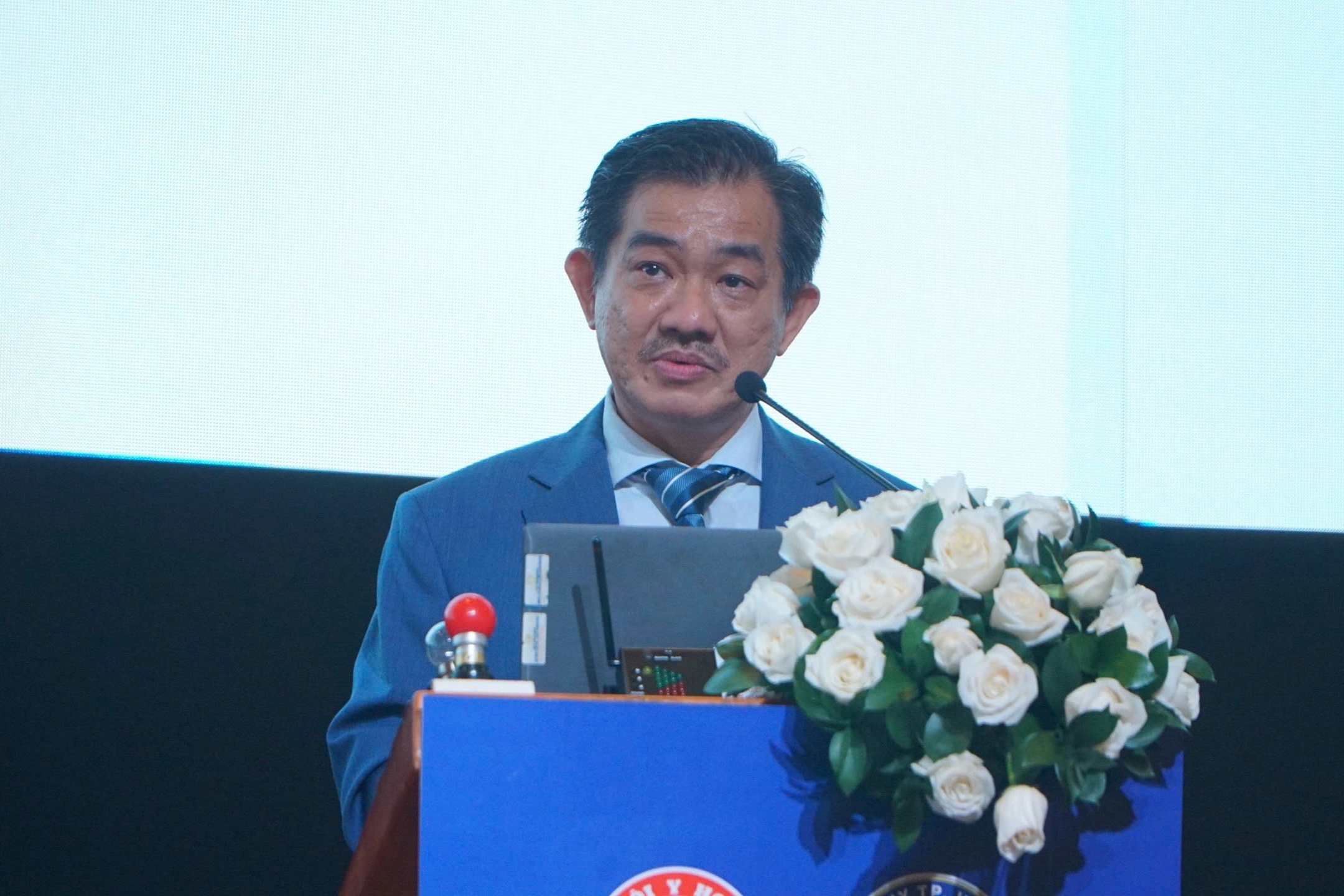
Associate Professor Thang shared at the conference. (Photo: Dieu Linh).
In his report, Dr. Nguyen Huy Thang also presented many statistics showing the improvement in the quality of stroke treatment in hospitals.
Specifically, the time from the patient's arrival at the hospital to the injection of thrombolytic drugs has been reduced to only 35 minutes. The time from the patient's arrival at the hospital to the removal of the thrombus is 75 minutes. These figures are considered very impressive and close to the world's recommendations.
The proportion of patients using intravenous thrombolysis will reach 12% by 2024.
"This is a positive number and can be said to be the highest among Asian countries today," the doctor said.
Sharing more, Dr. Mai Duy Ton said that in 2024, the Ministry of Health issued Guidelines for Stroke Diagnosis and Treatment. This is an important legal document for doctors to apply world medical advances into practice.
The Ministry is also developing a set of clinical criteria for stroke treatment to be applied nationwide. This set of criteria will evaluate three main factors: human resource quality, professional quality and service quality. This helps to evaluate the quality of stroke treatment in accordance with Vietnam's conditions, applicable to both public and private systems.
In addition, stroke has been proposed to be included in the National Target Program on Population Health Care for the period 2026-2035, becoming the sixth disease in this program.
In addition, the application of information technology is also being promoted. Software to predict stroke risk helps people assess risk and take early prevention; virtual assistants to support medical care are also being deployed.
"We are deploying a stroke monitoring application, which has been completed and accepted. In the coming time, the application will be piloted in cities.
When the software is stable, we will propose that the Ministry of Health integrate it into the VNeID software, so that all Vietnamese people can use it. The software will provide stroke risk predictions as well as recommendations for lifestyle changes, thereby helping to prevent strokes more effectively," Dr. Mai Duy Ton shared.
The ultimate goal is to develop a National Stroke Emergency and Treatment Program with clear resources, mechanisms and policies, thereby ensuring patients have access to the best medicines, services and techniques.
Stroke can quickly identify typical signs of stroke through the FAST principle: F (Face) - crooked mouth, A (Arm) - weakness or paralysis of one arm or leg, S (Speech) - difficulty speaking, slurred speech, T (Time) - time is gold, need to call emergency services immediately.
Specifically, when having a stroke, the patient's face is asymmetrical, the mouth is crooked, the philtrum is slightly tilted to one side, the nasolabial fold on the weak side droops, especially when the patient talks or laughs.
When asked to raise both arms up high, the patient may not be able to lift the arm or leg or may have difficulty lifting it, one arm or leg (or both) may suddenly become weak or numb.
In addition, when having a stroke, the patient suddenly has difficulty speaking. If these 3 signs appear at the same time, it shows that the patient is at very high risk of stroke, take the patient to a medical facility that can treat stroke as quickly as possible.
Source: https://dantri.com.vn/suc-khoe/noi-day-dut-ve-be-14-tuoi-dot-quy-va-ganh-nang-can-benh-nay-o-viet-nam-20250809172440554.htm









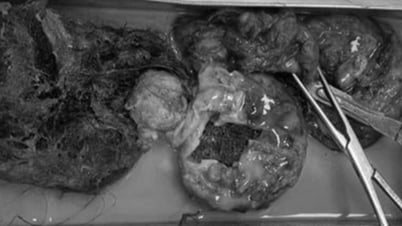
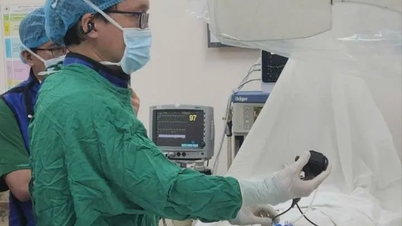


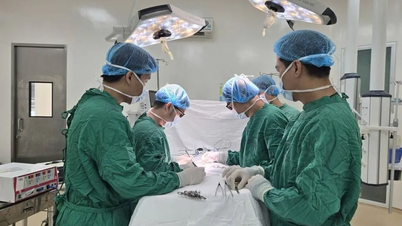
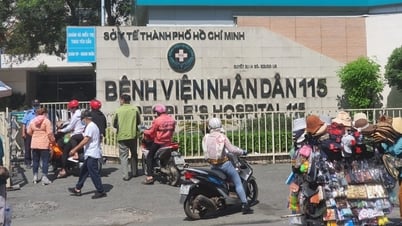


























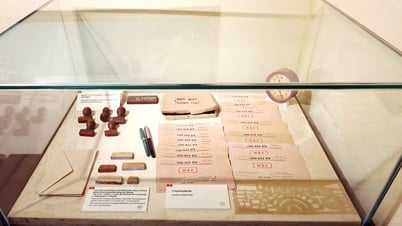












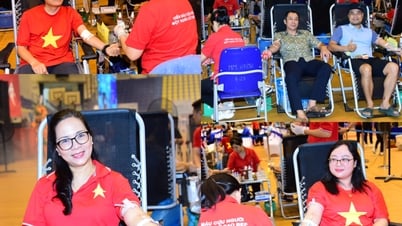







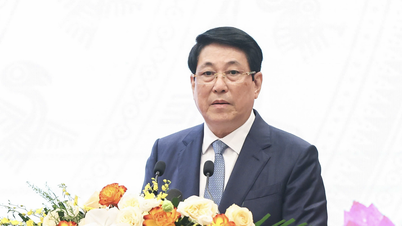


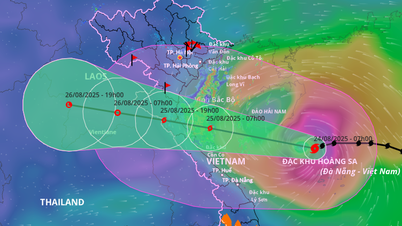















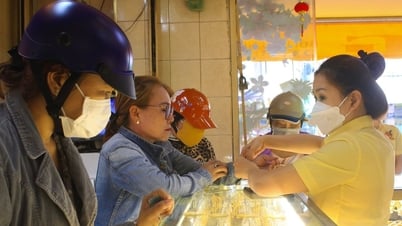












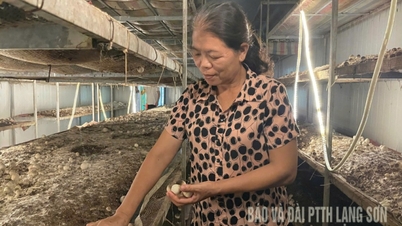






Comment (0)